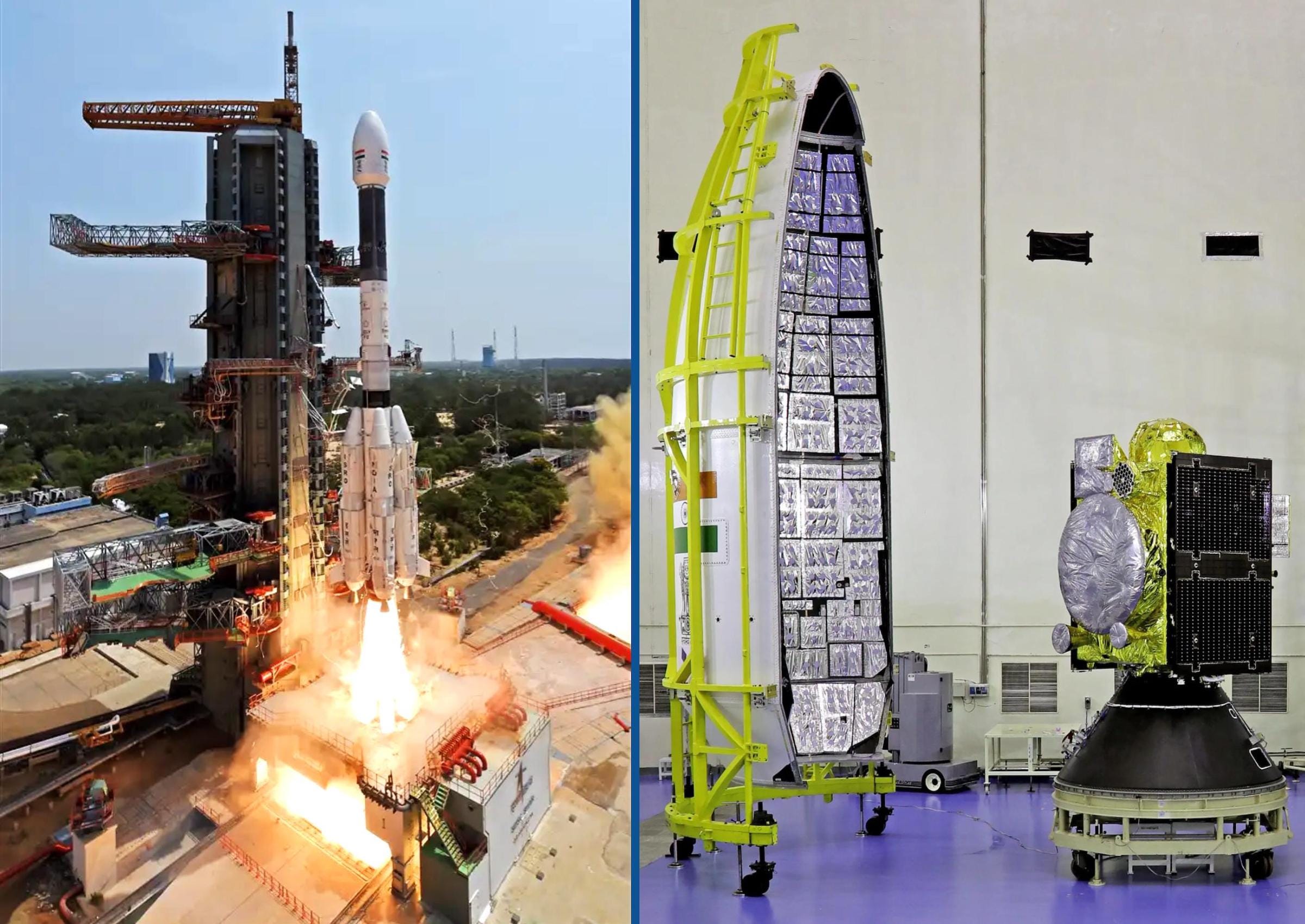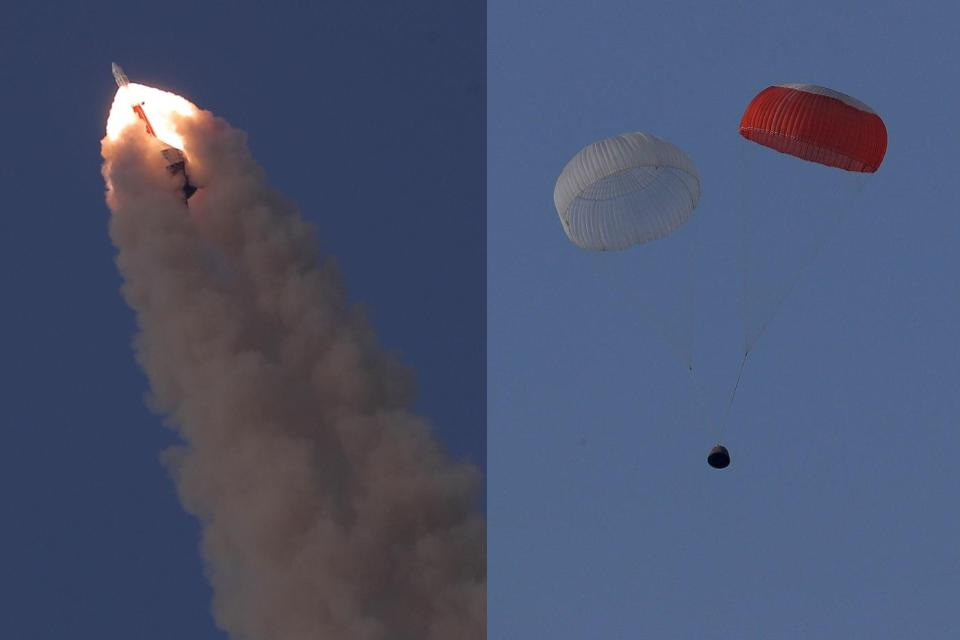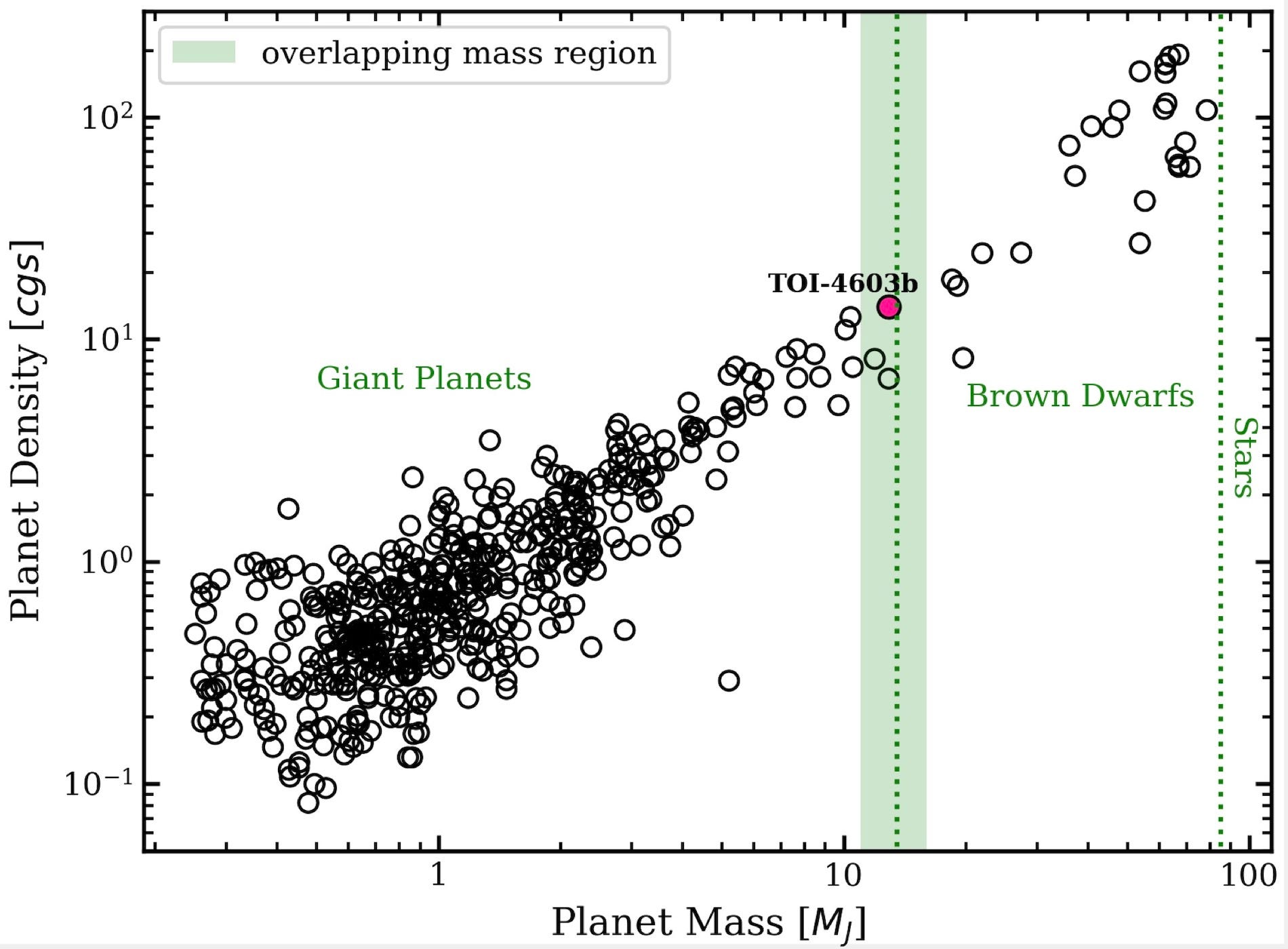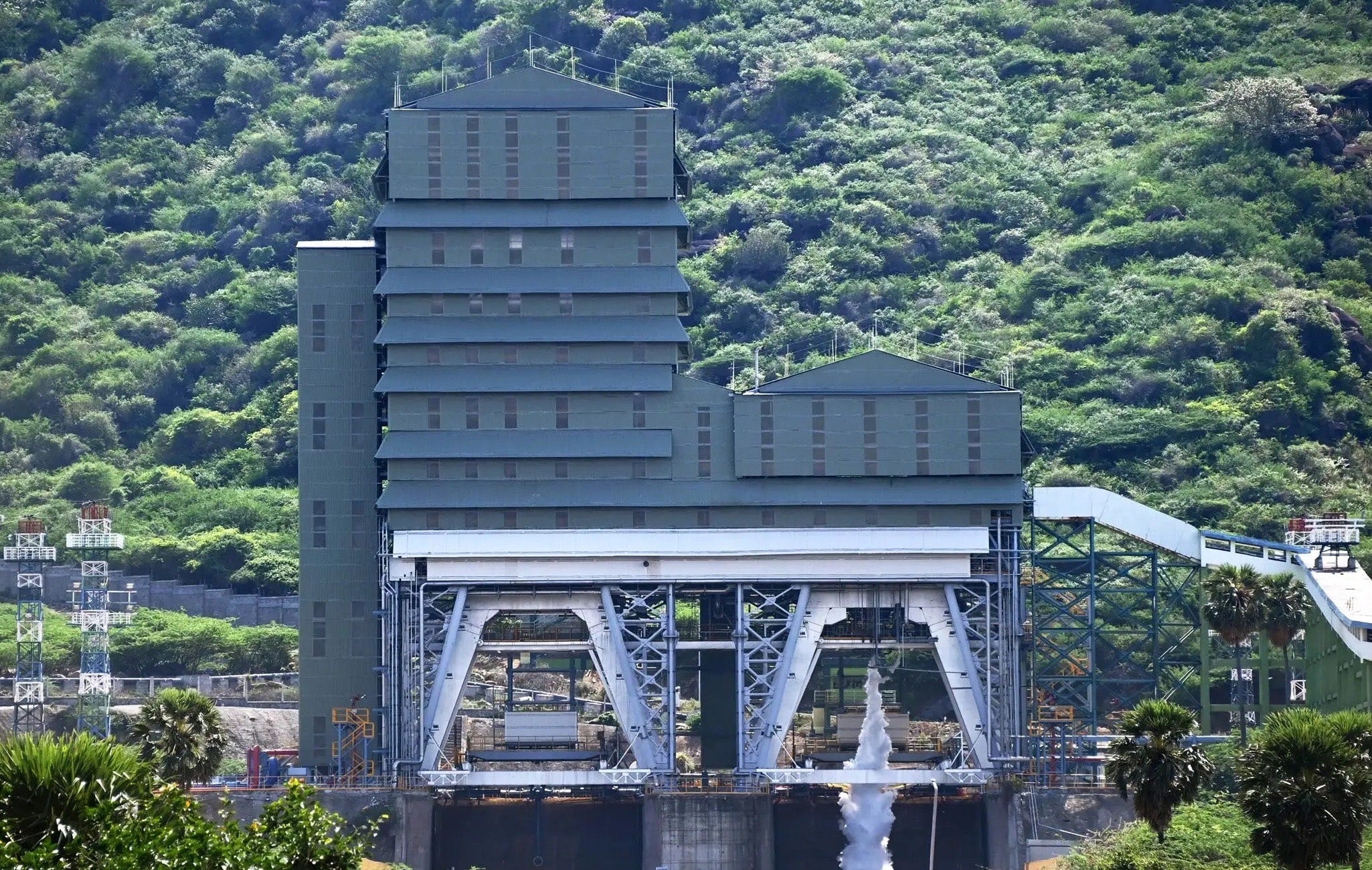Indian Space Progress #5: ISRO’s navigation satellites, advances toward human spaceflight, and more science & technology updates
ISRO begins launching navigation satellites with GPS interoperability and self-made atomic clocks

On May 29, an ISRO GSLV Mk II rocket successfully launched and deployed the NVS-01 navigation satellite into a Geosynchronous Transfer Orbit (GTO), providing a much needed boost to India’s regional navigation service called Navigation with Indian Constellation (NavIC). Prior to this launch, India only had four fully operational NavIC satellites out of the deployed seven, and four is the minimum number required to provide continuous positioning, navigation, and timing services to the Indian mainland plus 1,500 kilometers beyond.
NVS-01 is a second-generation NavIC satellite and features an L1 band for the first time, which allows it to interoperate with other GNSS systems such as GPS. Perhaps just as importantly, NVS-01 boasts an indigenously developed Rubidium atomic clock, which provides a stable frequency reference to the satellite for precision time keeping—a fundamental requirement of a navigation service.
Back in 2017 when many Rubidium atomic clocks on ESA’s Galileo navigation satellites failed, it affected some of India’s first-generation NavIC satellites as well because ISRO imported said clocks from Europe. This prompted India to develop the technology indigenously, accomplished specifically by ISRO’s Space Applications Center in Ahmedabad. This makes ISRO only the fifth space agency in the world have an operational Rubidium atomic clock in space, following NASA, ESA, CNSA, and Roscosmos.
ISRO aims to launch four more second-generation NavIC satellites by 2025, each designed to last at least 12 years. While originally these were supposed to expand the literal range of NavIC services on the globe, the atomic clock failures coupled with the whole initial constellation reaching end of operational life soon anyway has meant that the second generation NavIC satellites are essentially a reinforced redo of the primary baseline service. India’s ambition to make NavIC a global service like the GNSS providers is going to have to wait a while. Even within the country itself, the Indian government has found it difficult to have smartphone makers adopt NavIC compatibility.
While the first-generation NavIC satellites were all launched on PSLV-XL rockets, the more capable GSLV Mk II is ISRO’s choice for the second generation fleet. It’s therefore especially notable that the Mk II successfully deployed NVS-01 to GTO as it marks the rocket’s return to flight after its cryogenic third stage had failed on its last mission in 2021.
Another leap towards human spaceflight

As ISRO works towards the ambitious inaugural Gaganyaan mission to indigenously send humans to space, it has continued qualifying technologies needed to achieve the feat. On May 12, ISRO performed a 603-second burn of the twelve 100-newton thrusters that will power the Crew Module during Gaganyaan missions to provide controlled atmospheric descent. With this 14th successful test, all designed to validate the propulsion system’s functionality under various nominal and non-nominal mission scenarios, ISRO has now completed qualifying the system for flight.
In case of an abnormal rocket behavior during the launch phase, the propulsion system will also provide attitude control to the crew module between a height of 3 to 70 kilometers. Speaking of such situations, ISRO plans to conduct two milestone abort tests with full-scale crew modules this year, one by August and the other by end of year. For the first such test, called TV-D1, the parachutes have arrived as of May 13. ISRO qualified the TV-D1 Crew Module structure in January, and received an unpressurized module for the abort test from its contractor in February.
ISRO also commenced a series of sea recovery trials in February with a representative crew module, which simulates the mass, center of gravity, outer dimensions, and externals of the actual Gaganyaan Crew Module. On May 24, ISRO released the Gaganyaan Recovery Training Plan document internally to the expert teams led by the Indian Navy who will recover astronauts post splashdown on Earth.
Many thanks to the Takshashila Institution and SkyServe for sponsoring this month’s Indian Space Progress report.
Space Science & Technology updates

- Scientists using the Gurushikhar Observatory’s PARAS instrument have discovered an unusually dense Hot Jupiter exoplanet, TOI-4603b, which straddles the boundary between massive Jupiter-like planets and failed stars called brown dwarfs. No more than five exoplanets from the over 5,000 discovered to date currently fall in this mysterious mass region. This is the third exoplanet discovered by the PARAS instrument, following a sub-Saturn/super-Neptune find in 2018 and an inflated Hot Jupiter in 2021.
- ISRO’s Chandrayaan 3 Moon lander, aiming to be launched in the second week of July, arrived at the Sriharikota spaceport on May 26 to begin launch preparations, Sidharth MP reports. As part of a standard series of space simulating tests, Chandrayaan 3 notably successfully passed launch survival testing in March and electromagnetic interference testing in February.
- On May 10, ISRO successfully conducted the first integrated chill-down test on an indigenous 2000 KiloNewton kerolox Engine powerhead. It took place at a new facility dedicated for testing semi-cryogenic engines to be used on ISRO’s future rockets. ISRO plans to upgrade the core stage of the GSLV Mk III rocket—which recently commercially launched OneWeb satellites—with said engine instead of the existing two Vikas ones. This will increase the Mk III’s payload capacity to GTO from ~4,000 kilograms to 6,000. Variants of this semi-cryogenic engine will also power parts of India’s upcoming heavy-lift and reusable launch vehicle respectively.

More Indian space
- Pixxel, headquartered in India but with a major US presence, announced a Google-led $36 million Series B funding round. The company was previously targeting launching six commercial hyperspectral Earth imaging satellites to a sun-synchronous 550-kilometer orbit this year but now says in the funding raise announcement that the satellites will launch in 2024. Pixxel has raised a total of ~$70 million until today.
- The International Conference on Spacecraft Mission Operations, organized by ISRO and the Astronomical Society of India, takes place on June 8 and 9. It will see various national space agencies and global industry players discuss challenges of complex spacecraft operations from across the spectrum of space missions. The conference will also focus on emerging automation technologies to cater to said existing and upcoming challenges. I will be in Bengaluru to attend the conference. Get in touch if you’d like to chat space, science, or the Web.
